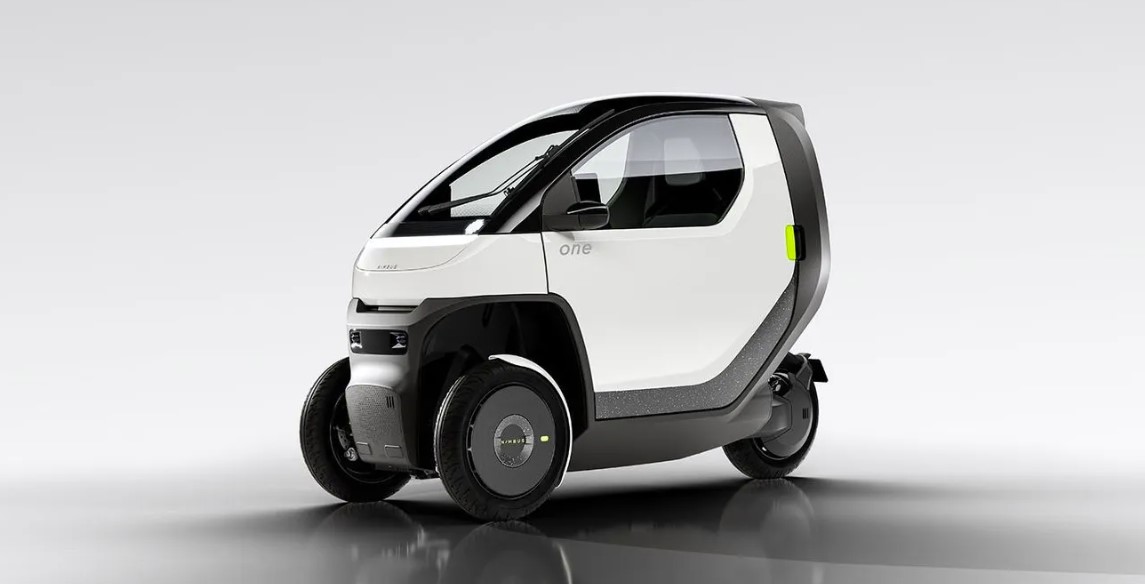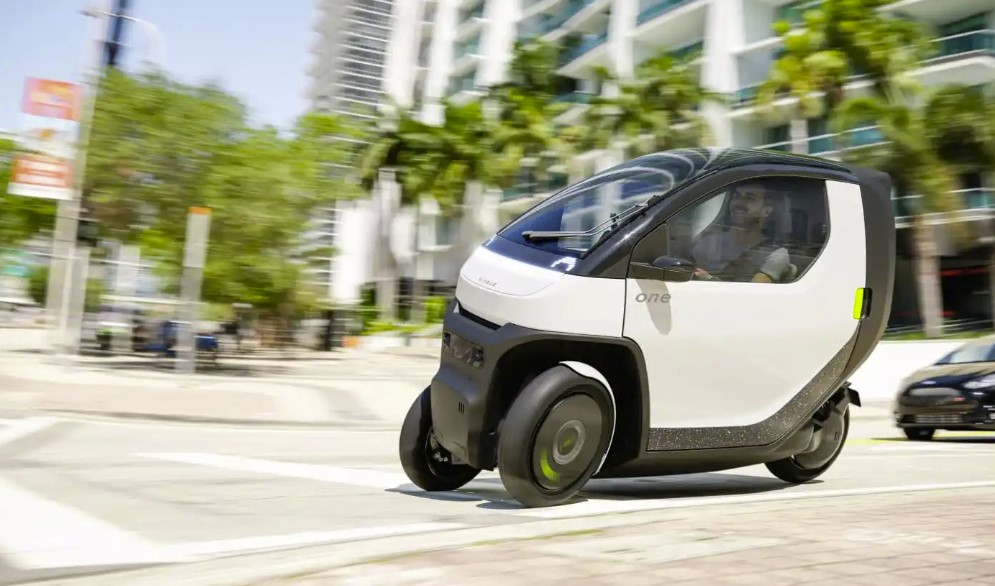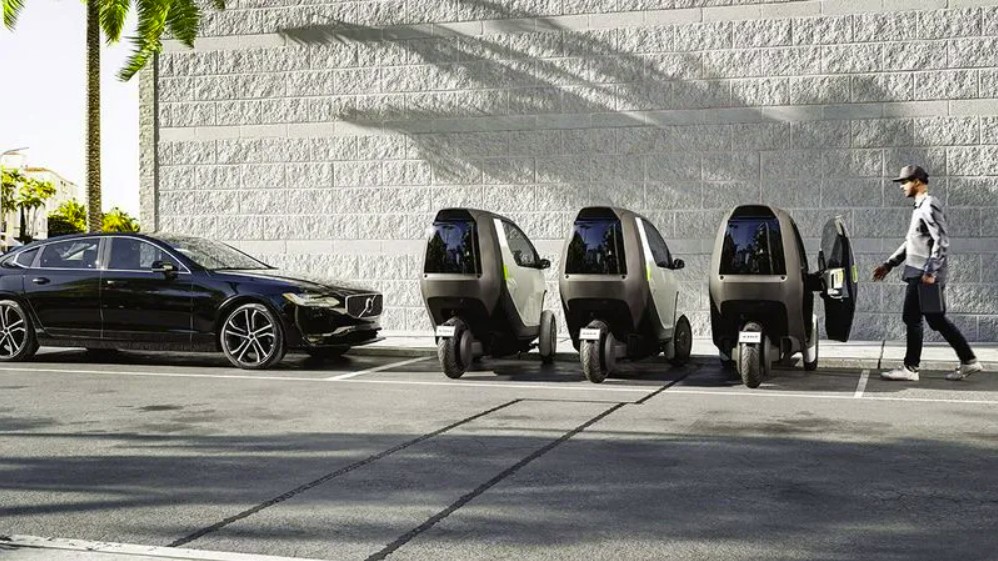Nimbus One is an electric two-seater tricycle with a maximum speed of 50 mph, and a range of 93 miles

Safety and weather are among the most frequently cited reasons for automobile commuters rejecting smaller vehicles like bicycles, scooters, and motorcycles. But the Nimbus One, with its fully enclosed design and car-like safety features, is attempting to address both concerns at once. That's the idea in a nutshell: the Nimbus One "combines the convenience and cost of a motorbike with the safety and comfort of a vehicle."
The Nimbus One is a two-wheel-in-front, one-wheel-behind design. That's more steady than a conventional delta trike configuration, although the leaning mechanism is really what makes it so sturdy. The Nimbus One leans into turns in the same way that a bicycle does, preventing that "uh oh, I'm going to flip!" sensation rigid tricycles have when making tight turns. Unlike a bike, the driver (rider?) of the Nimbus One does not have to physically lean the vehicle. Instead, depending on the sharpness of the turn, the car leans automatically. It eliminates all of the skill required to drive a leaning automobile, making it considerably easier for novices to control.

While the vehicle is smaller than a car and takes up approximately 25% of the parking space required by a vehicle, it still has many automobile characteristics. A front airbag, fully enclosed waterproof design, windscreen wiper, and even electronic safety features such as "onboard cameras and AI to detect other automobiles and avoid collisions" are all included.
The front passenger seat is adjustable up to three points, while the middle rear seat reclines and seats two people. There's also a second jump seat or cargo area in the back, depending on your needs. A child's seat will be accessible via attachment points, making this the most beautiful electric vehicle in the daycare drop-off lane officially.

The Nimbus One is a three-wheeled vehicle that has standard seats, seatbelts, and a steering wheel. Autocycles are a state-level category of vehicle in the United States, but there is no federal-level classification for them. That implies they are federally classified as motorcycles and must follow all relevant NHTSA motorcycle laws. Over half of the United States has legislation regulating Autocycles, which are similar to automobiles and require only a car driver's license to operate. As far as I know, the Massachusetts is the lone state that will demand you have a motorcycle license to drive a Nimbus One.
The technical specifications of the Nimbus One still include a "anticipated specs" warning, although the designers are targeting a top speed of 50 mph (80 km/h) and a range of 93 miles (150 km) at slower urban speeds. It would come with a 9-kWh battery, which is larger than the Zero electric motorcycles' batteries.
The batteries are easily detachable and may be charged separately from the vehicle, with Gogoro-style battery changing machines a possibility in the future. The battery pack should take 1.2 hours to charge using a Level 2 charger, but it will require 5.4 hours to charge using a wall outlet. The 5.4-hour recharge sounds like it would clash head on with the laws of physics for a typical 15A breaker on a US 120V outlet, but perhaps the firm is counting on you having bigger power circuits in your home?

For Europeans, the Nimbus One is a blessing. Its carbon effect is said to be 1/3 that of a Tesla Model 3 and 1/10th that of a gasoline automobile. You could also cut through traffic more easily, assuming lane splitting is legal in your state, because it's only 34 inches wide (86 cm). Europeans who experience lane splitting more than Americans are also in luck.
The Nimbus One is supposed to start shipping in the United States in Q3 of 2023, with European cities following soon after. Customers in the US and Europe can now make reservations. To get on the list, you must first invest $100. The price of buying or renting the Nimbus one is then another $9,980 (or $200 per month)
Source: electrek.co